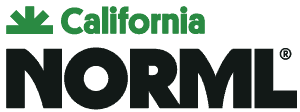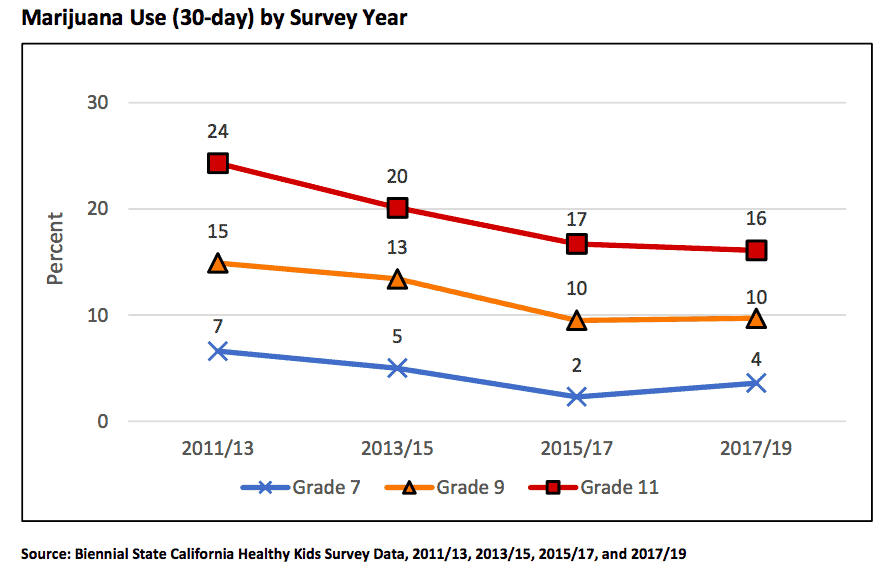May 4, 2021 – Last week, opponents to a California bill pushing back against a proposed ban on billboard ads for licensed cannabis businesses touted a study they say claimed marijuana use is up significantly among youth in the state following legalization. On closer look, however, the study they cite is an an analysis of the CA Dept. of Education’s Health Kids Survey which found no such rise in use, only a slight rise in self-reported use in the past 30 days by 7th graders that could be the result of a change in the survey question to clarify that “use” meant vaping or edibles as well as smoking.
Lifetime marijuana use by California students showed a similar pattern in the survey, with 11th graders’ admitted use dropping from 31.9% to 29.2% , 9th graders dropping from 17.4% to 17.1%, and 7th graders upticking from 4.2% to 6.3%, again attributed perhaps to a change in the question asked (Table A6.2).
Yet, the analysis as cited by opponents claims an 18% increase in the “likelihood” of lifetime use and a 23% increase in past 30-day use, following a seven-year decline in marijuana use (actually, the decline started more like 25 years ago, after Prop. 215 legalized medical marijuana in California). The researchers seemed to be adjusting for an assumption that a further decline in youth use would have been expected based on the years prior to 2018-9; however a leveling off is not an increase. The researchers added that, “was not significantly associated with frequency of past-30-day use among users,” so although kids may be trying marijuana, they aren’t using it more frequently since legalization.
The group performing the “multilevel logistic regression analyses” on the data is PIRE (Pacific Institute for Research and Evaluation), which has no direct affiliation with a university and instead lists a group of “client/partners” including the DOD, DOJ, NIH, etc., and among its “academic partners” the Center on Addiction & Substance Abuse (CASA) at Columbia University, long known for its anti-marijuana studies (which are what the government is far more likely to fund).
A study from UCSD looking at similar years found no uptick in teen use. NORML is not aware of data from any other state attributing an increase in teen use post-legalization. A recent study commissioned by the Insurance Institute for Highway Safety found no underage sales at licensed California cannabis retailers. Read about earlier years’ studies on youth marijuana use in California.
Perhaps reason is starting to invade politics in California: Asm. Quirk’s AB 1302, allowing for restricted cannabis billboard ads, advanced out of committee last week while a competing bill from Asm. Jacqui Irwin to effectively ban them did not advance. Irwin quoted the PIRE study in an oped in the Ventura County Star claiming “data doesn’t lie.”
UPDATE 5/6 – The National Institute on Drug Abuse and other federal agencies are accepting grant applications to support research on the “effects of changes in the legal status of cannabis on health-related behaviors and outcomes” and the “effects of variations in the legal provisions applicable to legalized cannabis.” Listed as a scientific contact is someone from the National Institute on Alcohol Abuse and Alcoholism (NIAAA), which funded the PIRE study.

